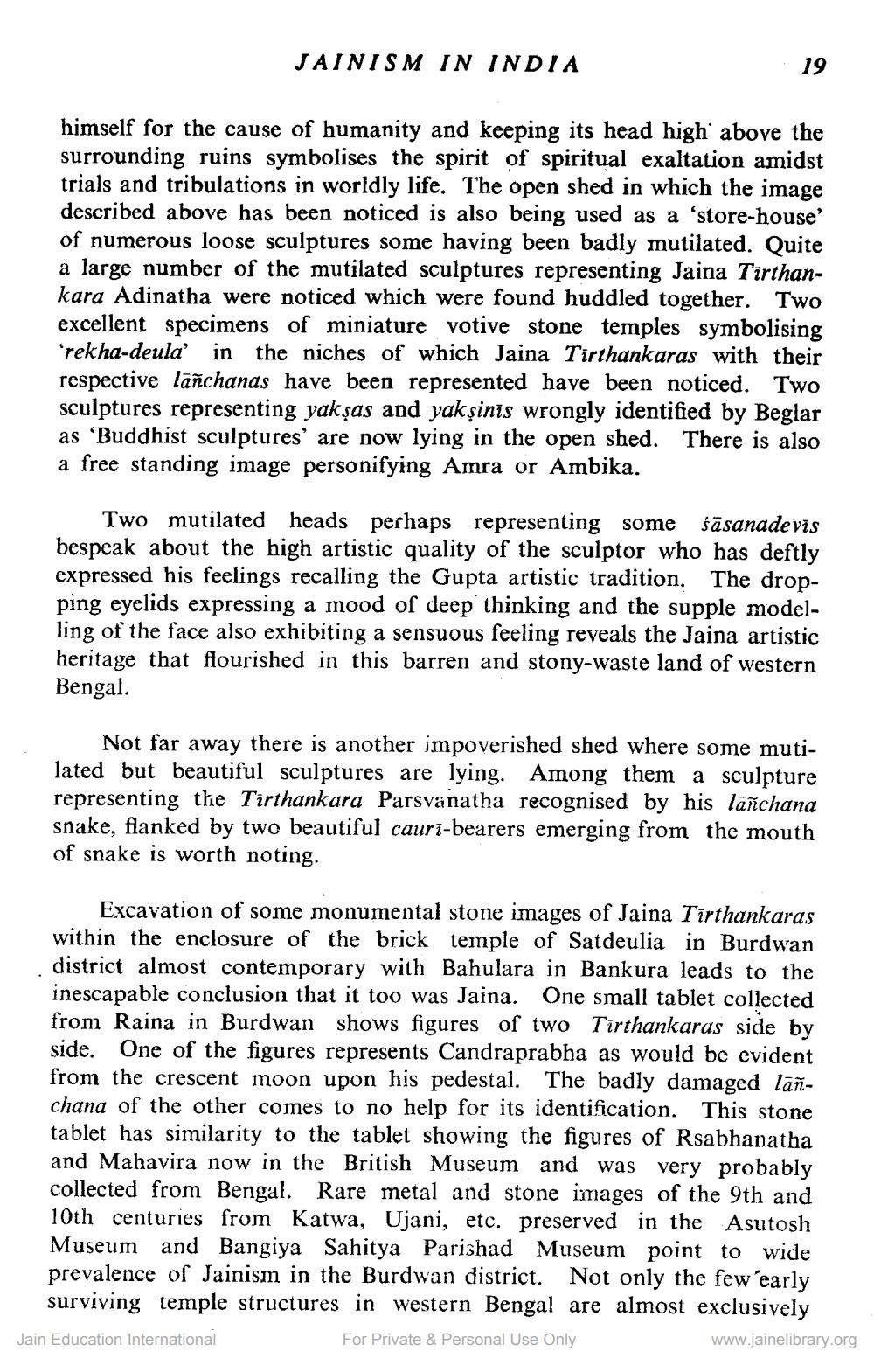________________
JAINISM IN INDIA
himself for the cause of humanity and keeping its head high above the surrounding ruins symbolises the spirit of spiritual exaltation amidst trials and tribulations in worldly life. The open shed in which the image described above has been noticed is also being used as a 'store-house' of numerous loose sculptures some having been badly mutilated. Quite a large number of the mutilated sculptures representing Jaina Tirthankara Adinatha were noticed which were found huddled together. Two excellent specimens of miniature votive stone temples symbolising ‘rekha-deula' in the niches of which Jaina Tirthankaras with their respective lāñchanas have been represented have been noticed. Two sculptures representing yakşas and yakșinis wrongly identified by Beglar as 'Buddhist sculptures' are now lying in the open shed. There is also a free standing image personifying Amra or Ambika.
Two mutilated heads perhaps representing some sāsanadevīs bespeak about the high artistic quality of the sculptor who has deftly expressed his feelings recalling the Gupta artistic tradition. The dropping eyelids expressing a mood of deep thinking and the supple modelling of the face also exhibiting a sensuous feeling reveals the Jaina artistic heritage that flourished in this barren and stony-waste land of western Bengal.
Not far away there is another impoverished shed where some mutilated but beautiful sculptures are lying. Among them a sculpture representing the Tirthankara Parsvanatha recognised by his lāñchana snake, flanked by two beautiful cauri-bearers emerging from the mouth of snake is worth noting.
Excavation of some monumental stone images of Jaina Tirthankaras within the enclosure of the brick temple of Satdeulia in Burdwan district almost contemporary with Bahulara in Bankura leads to the inescapable conclusion that it too was Jaina. One small tablet collected from Raina in Burdwan shows figures of two Tirthankaras side by side. One of the figures represents Candraprabha as would be evident from the crescent moon upon his pedestal. The badly damaged lanchana of the other comes to no help for its identification. This stone tablet has similarity to the tablet showing the figures of Rsabhanatha and Mahavira now in the British Museum and was very probably collected from Bengal. Rare metal and stone images of the 9th and 10th centuries from Katwa, Ujani, etc. preserved in the Asutosh Museum and Bangiya Sahitya Parishad Museum point to wide prevalence of Jainism in the Burdwan district. Not only the few early
surviving temple structures in western Bengal are almost exclusively Jain Education International For Private & Personal Use Only
www.jainelibrary.org




